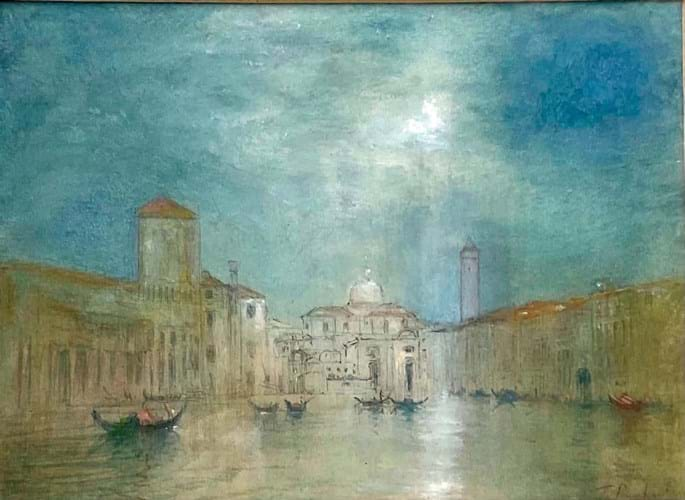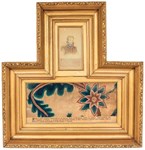Being the great arbiter of Victorian taste, you might expect the watercolours of John Ruskin (1819-1900) to follow the general trend of the 19th century art market.
But a reliable following of dedicated dealers and knowledgeable collectors means Ruskin-related lots tend to have fared better than those of many of his contemporaries over recent times.
Despite the ongoing difficulties in the wider market for Victorian watercolours, his topographical and naturalistic studies, as well as his detailed architectural views and, especially, the evocative European landscapes, still generate decent demand when they make their occasional appearances at auction.
Grand design
One of the latest emerged at David Duggleby (20% buyer’s premium) in Scarborough on November 26.
Measuring 6¼x 8½in (16 x 22cm), the small sketch represented another key part of his oeuvre: views of Venice.
Venice by Moonlight came from a Yorkshire source and depicted a view looking down the Grand Canal. With provenance being crucial when it comes to Ruskin watercolours, this example benefited from a label on the back for the Charles Fairfax Murray collection.
Fairfax Murray (1849-1919) became a student of Ruskin at the age of 16 and, in his 20s, left England for Italy where he worked as a copyist for Ruskin in Rome, Siena, Pisa and Venice, allowing him to advance his study of the Italian masters.
A significant collector himself, in 1904 he sold more than 800 Pre-Raphaelite drawings to the Birmingham Museum and Art Gallery and gave a Titian, more than a dozen Constables, four early Gainsboroughs and a Corot to the Fitzwilliam Museum in Cambridge.
As well as this attractive connection, the watercolour and pencil sketch in Scarborough drew admirers too for its elegant sky and handling of the moonlight on the water. It was always likely to perform well against a £1000-1500 estimate.
On the day it drew international competition both on the phone and online. After reaching around £5000 it came down to a competition between two parties before selling at £10,000 to a London buyer who saw off an underbidder on the phone.
While Ruskin’s Venetian subjects have sold for substantially more in the past, this was a decent sum for a work of this size that was not ostensibly an architectural study.
Lake District home
Meanwhile, another lot appealing to Ruskin collectors – although this time not by the man himself – was on offer at Bainbridges (27% buyer’s premium) in West Ruislip on November 11.
The watercolour by William Gershom Collingwood (1854-1932) depicted Brantwood, Ruskin’s home in the Lake District. Close inspection of the 8 x 10in (20 x 25cm) painting showed the figure of Ruskin in the turret window of his study.
The two men had met at Oxford in 1872 and for many years Collingwood, an author, artist and antiquary, dedicated himself to helping Ruskin, staying at Brantwood as his assistant and travelling with him to Switzerland.
When he married in 1883, Collingwood too settled in Coniston. As President of the Cumberland and Westmorland Antiquarian Society and the Lake Artists’ Society, he edited a number of Ruskin’s texts, published his biography in 1893 and founded the Ruskin Museum in 1901.
This work appears to have been a gift from Collingwood to Dr John Kendall of Coniston, a friend and personal physician to Ruskin. It was offered by one of Kendall’s descendants who was clearing a home in Neasden, London.
Estimated at £200-250, it took £3200 from a London gallery.
While pictures by Collingwood are not very common at auction, a couple of Brantwood have emerged before, including an interior view of Ruskin working in his study that sold at Christie’s back in April 1988 for £3600 – seemingly still the auction record for the artist.
The price in West Ruislip was the highest since then (source: Artprice by Artmarket), and so can be deemed a very respectable sum – especially in light of two other watercolours by the artist, part of the same consignment, making £420 and £240 respectively.
The same vendor yielded a group of seven letters from Ruskin to Kendall mostly relating to their shared interest in local geology. Offered as a single lot with a £1500-2000 estimate, they failed to sell.















